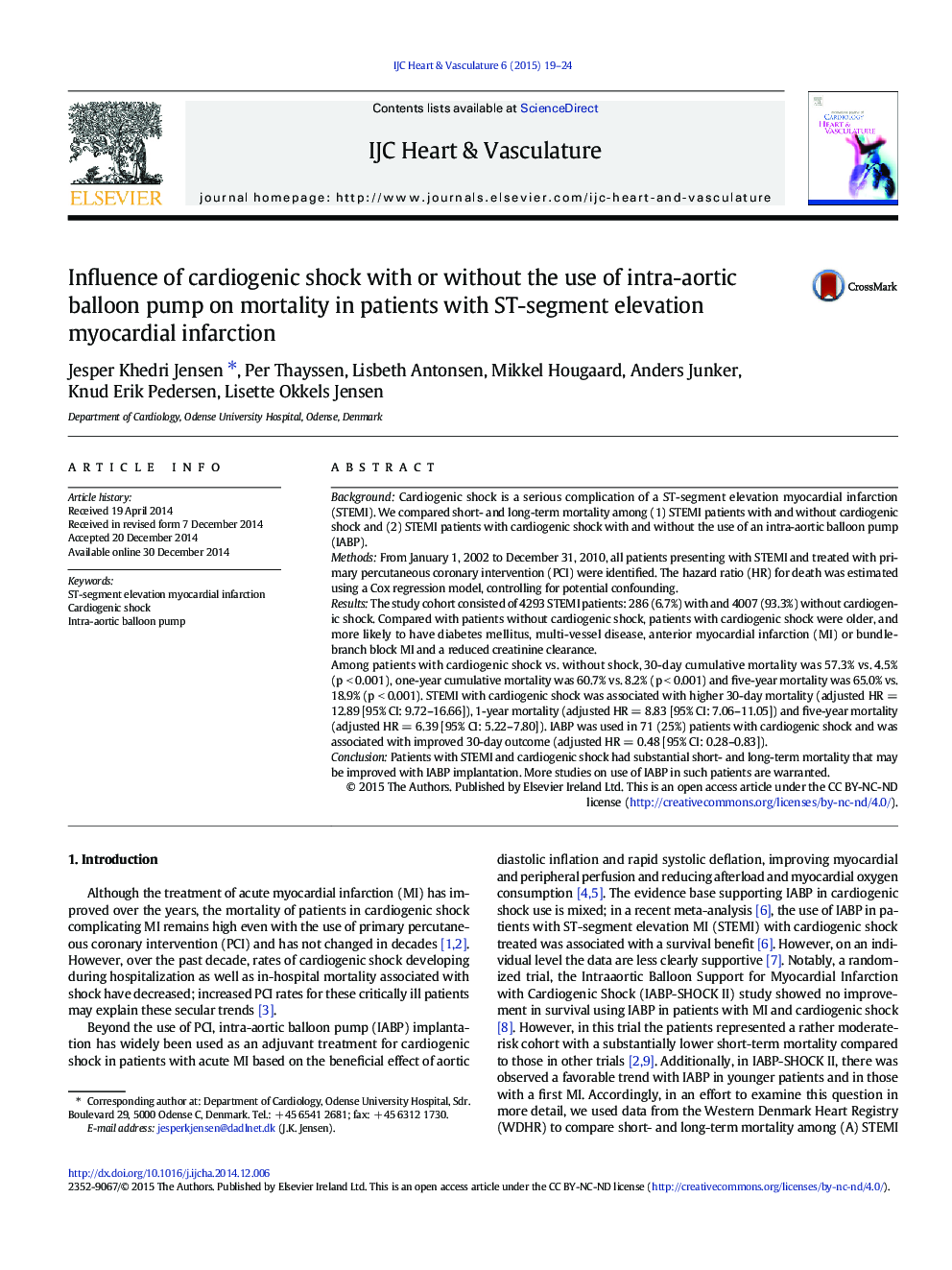| Article ID | Journal | Published Year | Pages | File Type |
|---|---|---|---|---|
| 2927054 | IJC Heart & Vasculature | 2015 | 6 Pages |
BackgroundCardiogenic shock is a serious complication of a ST-segment elevation myocardial infarction (STEMI). We compared short- and long-term mortality among (1) STEMI patients with and without cardiogenic shock and (2) STEMI patients with cardiogenic shock with and without the use of an intra-aortic balloon pump (IABP).MethodsFrom January 1, 2002 to December 31, 2010, all patients presenting with STEMI and treated with primary percutaneous coronary intervention (PCI) were identified. The hazard ratio (HR) for death was estimated using a Cox regression model, controlling for potential confounding.ResultsThe study cohort consisted of 4293 STEMI patients: 286 (6.7%) with and 4007 (93.3%) without cardiogenic shock. Compared with patients without cardiogenic shock, patients with cardiogenic shock were older, and more likely to have diabetes mellitus, multi-vessel disease, anterior myocardial infarction (MI) or bundle-branch block MI and a reduced creatinine clearance.Among patients with cardiogenic shock vs. without shock, 30-day cumulative mortality was 57.3% vs. 4.5% (p < 0.001), one-year cumulative mortality was 60.7% vs. 8.2% (p < 0.001) and five-year mortality was 65.0% vs. 18.9% (p < 0.001). STEMI with cardiogenic shock was associated with higher 30-day mortality (adjusted HR = 12.89 [95% CI: 9.72–16.66]), 1-year mortality (adjusted HR = 8.83 [95% CI: 7.06–11.05]) and five-year mortality (adjusted HR = 6.39 [95% CI: 5.22–7.80]). IABP was used in 71 (25%) patients with cardiogenic shock and was associated with improved 30-day outcome (adjusted HR = 0.48 [95% CI: 0.28–0.83]).ConclusionPatients with STEMI and cardiogenic shock had substantial short- and long-term mortality that may be improved with IABP implantation. More studies on use of IABP in such patients are warranted.
